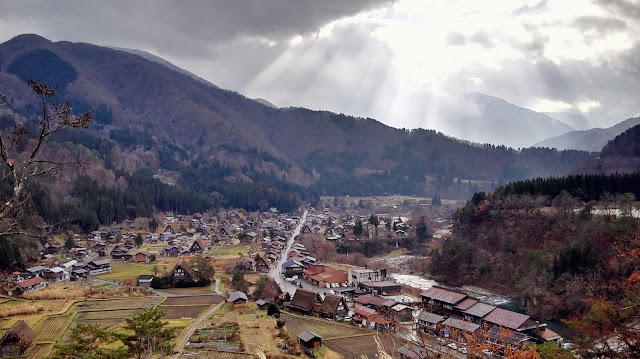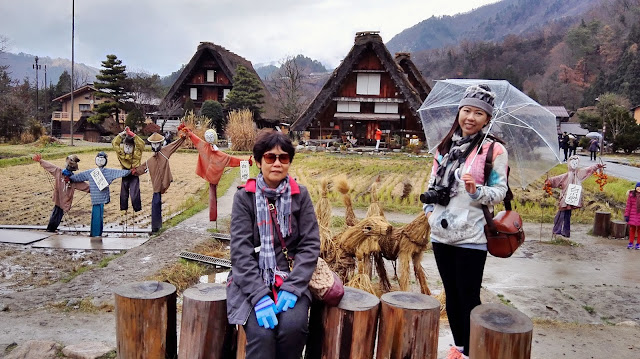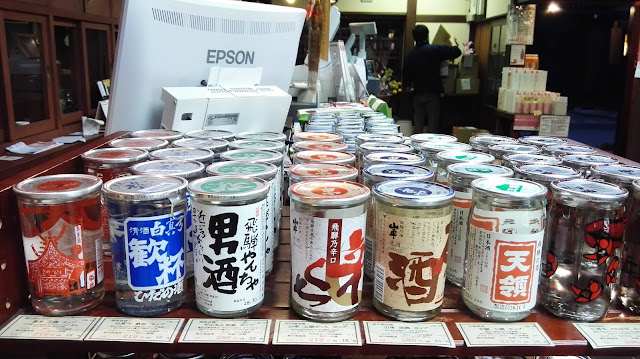29 Nov - 1 Dec 2016
Hakone was one of the best place I visited in this trip. With 2-day free pass, we enjoyed unlimited use of Odakyu-affiliated buses, trains, boats, cable cars and ropeways in the Hakone area and discounted admission to selected tourist attractions. It was a 5-hour train journey from Takayama to Hakone and again we arrived hotel late night.
We spent two nights at Onsen Guest House HAKONE TENT, which was rather affordable, at the price of 45 USD for three persons per night. The accommodation provides kitchen, lounge and even free natural hot spa which can be locked for personal use. The hotel was cozy and clean, but the layouts was confusing. We got lost a few times while walking to the bathroom and the corridors were narrow.
The weather was nice the next morning. There was a good view of a sports field from our room.
We headed to Owakudani first. From Gora station, we took Hakone Tozan Cable Car and switched to the Hakone Ropeway from Sounzan station.
Much of the Owakudani area is an active volcanic zone where sulfurous fumes, hot springs and hot rivers can be located. From here you can have good views of Mount Fuji on clear days.
You will get the opportunity to feast on freshly boiled black eggs at Owakudani. They are regular chicken eggs. The albumen and other parts of the egg still look the same as a traditional boiled egg, but it’s the manner in which they are boiled that makes them a little bit special (80 degrees Celsius for 60 minutes in natural spring water. Then steamed at 100 degrees for 15 minutes in steel baskets.) The water that they are boiled in contains sulfur and iron. The black eggs, or commonly called "Kuro-Tamago" by the locals are perfectly safe, although they may smell like sulfur. In fact they are believed to add a few years to your life span -- five to seven years depending on who you talk to. I did not really taste the sulfur anyway.
The Hakone Pirate Ships are the main form of transport between the Hakone Ropeway Station at Togendai and the two townships of Motohakone-ko and Hakone-machi. From the deck of the Hakone Pirate Ships you can enjoy the scenery Lake Ashi including the vermillion shrine gate of Hakone Shrine. There is even a small chance that the weather will be clear enough to allow a clear view of Mt Fuji.
We ended the day at Tenzen hot spring which can be accessed by bus from Hakone-Yumoto; take either the K-line bus or the ¥100 shuttle and get off at Okuyumoto-Iriguchi. The price was slightly steep which was 1300 yen per person.
It was my first onsen experience in naked. I am not a nudist, but I was not nervous stripping off my shirt to bathe myself in a nice natural hot water with strangers. I have more concern doing this with someones familiar though.
We were given a locker each to place our belongings and then we proceeded to the bathroom where we rinsed our body with some warm water. There were rows of miniature stools, each with a shower head and a bar of soap next to it. The idea is to sit uncomfortably on these stools while you wash yourself thoroughly before and after the hot bath.
And then we started to soak and enjoyed our time here. Tenzen is a single sex onsen so my dad was separated. In less than an hour, we got up and went for shower. My mum and I managed to soak in all pools except for the hot tub in the bathroom as the water was freaking hot and burning the skin.
There was a weight scale at the exit of the bathroom. I was surprised to to see my weight had dropped 2kgs after the hot bath. Amazing!!!!
We walked around Hakone-Yumoto in order to change more YEN (I had over-spent for the accommodation in Takayama). Then we came to see this stall which was selling fried snacks like fish cake, crab cake and etc. We could not resist and decided to buy two to try. They were fresh and hot from stove but slightly oily.
We went back to our hostel and had another round of onsen in the hostel itself.
Hakone Open Air Museum was the first open air museum in Japan. They create a harmonic balance of nature and art by exhibiting various sculptures on its grounds in combination with views of the surrounding valley and mountains. There is a permanent exhibition of about 120 masterpieces of modern and contemporary sculptors in the world. The Picasso Exhibition Hall is one such space and showcases two stories of paintings, sculptures and ceramic works by the artist in addition to photos of him at various points during his life.
Our last stop at Hakone was Sengokuhara Pampas Grass Field. The pampas grass field is located a few steps from Sengoku Kogen (仙石高原) bus stop (served by Hakone Tozan Bus Line T and the Odakyu Bus). The tall grasses here cover the hillside for hundreds of meters, changing color with the seasons and offering stunning views
































































































